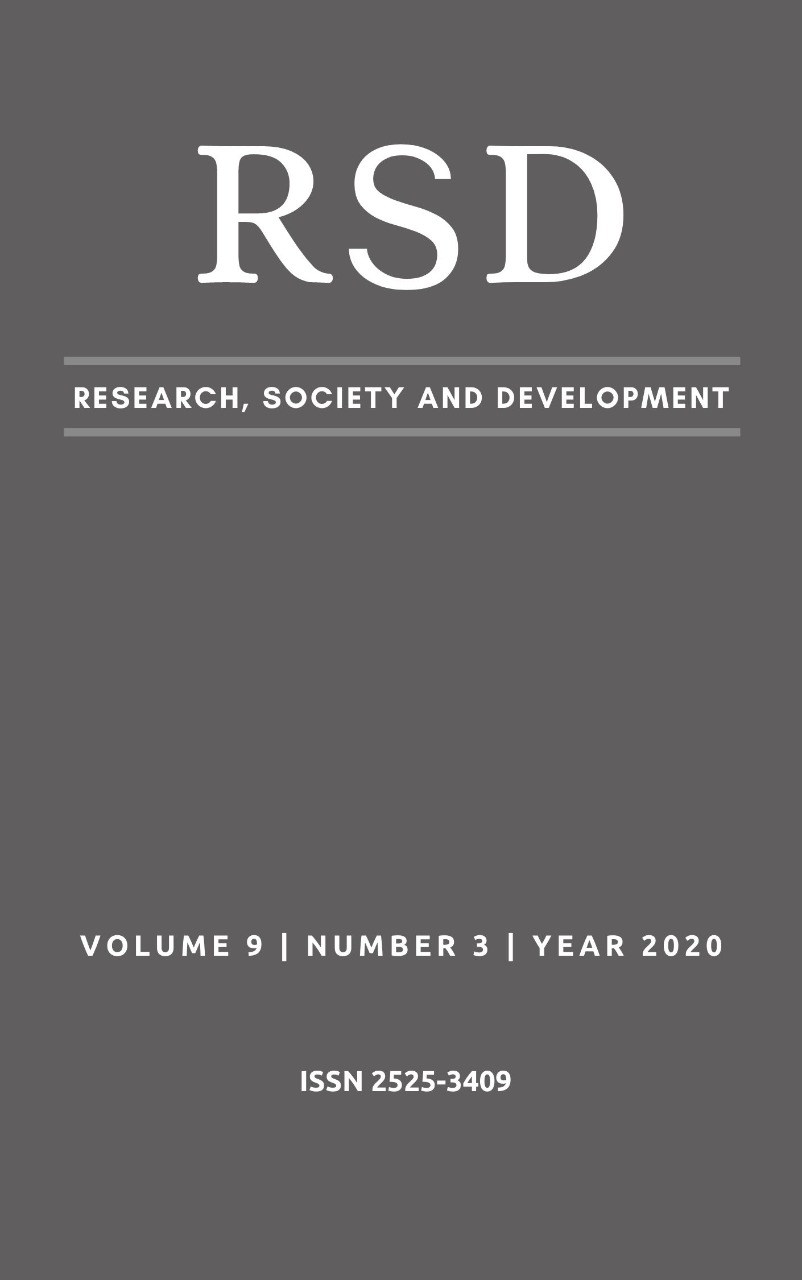Panorama da pesquisa internacional sobre os métodos de cálculo do benefício e despesas indiretas: uma análise bibliométrica
DOI:
https://doi.org/10.33448/rsd-v9i3.2315Palavras-chave:
Bibliometria, Benefício e despesas indiretas, Análise de custo.Resumo
Benefício e Despesas Indiretas (BDI) é uma porcentagem composta pelos custos indiretos, estimativa de lucro e encargos tributários, aplicada sobre todos os serviços que compõem o custo direto de um orçamento. Contudo, esse conceito é objeto de debate devido às divergências quanto a determinação dos seus componentes e fórmulas de cálculo. Este artigo tem como objetivo identificar as posições divergentes à composição do BDI, bem como as propostas de métodos de cálculo e a frequência de ocorrência do tema no conteúdo científico mundial. Por meio de uma análise bibliométrica, identificou-se 42 artigos relevantes que após a interpolação dos metadados selecionados resultou em 10 artigos nos quais se percebe a dificuldade na determinação do BDI, assim como apresentam-se alternativas de melhoria do processo convencional de cálculo.
Referências
Abotaleb, I. S., & El-Adaway, I. H. (2016). Construction bidding markup estimation using a multistage decision theory approach. Journal of Construction Engineering and Management, 143(1), 04016079.
Asgari, S., Awwad, R., Kandil, A., & Odeh, I. (2016). Impact of considering need for work and risk on performance of construction contractors: An agent-based approach. Automation in Construction, 65, 9-20.
Awwad, R. (2015). Evolutionary simulation of contractors’ learning and behavior under two bid-tendering approaches. Journal of Management in Engineering, 32(2), 04015041.
Tribunal de Contas da União (2013). Estudo sobre Taxas Referenciais de BDI de Obras Públicas e de Materiais e Equipamentos Relevantes. Tribunal de Contas da União. Retirado 05, 2019, de https://www.tcu.gov.br.
Chao, L. C., & Kuo, C. P. (2017). Neural-network-centered approach to determining lower limit of combined rate of overheads and markup. Journal of Construction Engineering and Management, 144(2), 04017117.
Chao, L. C., & Liaw, S. J. (2019). Fuzzy Logic Model for Determining Minimum Overheads-Cum-Markup Rate. Journal of Construction Engineering and Management, 145(4), 04019008.
Freires, A. P., & Pamplona, E. D. O. (2005). Um enfoque no BDI de empresas construtoras de pequeno porte com a utilização das ferramentas de custeio ABC/ABM. In Anais do Congresso Brasileiro de Custos-ABC.
Haustein, S., & Larivière, V. (2015). The use of bibliometrics for assessing research: Possibilities, limitations and adverse effects. In incentives and performance (pp. 121-139). Springer, Cham.
Liu, J., Cui, Z., Yang, X., & Skitmore, M. (2018). Experimental investigation of the impact of risk preference on construction bid markups. Journal of Management in Engineering, 34(3), 04018003.
Shafahi, A., & Haghani, A. (2014). Modeling contractors' project selection and markup decisions influenced by eminence. International Journal of Project Management, 32(8), 1481-1493.
Shim, E., & Kim, S. J. (2016). Cost Item-based Markup Distribution in Construction Projects. Journal of Technology, Management & Applied Engineering, 32(1).
Takano, Y., Ishii, N., & Muraki, M. (2018). Determining bid markup and resources allocated to cost estimation in competitive bidding. Automation in Construction, 85, 358-368.
AACEI (2019). 10S-90: Cost Engineering Terminology. The Association For The Advancement Of Cost Engineering International. Retirado 05, 2019, de https://www.aacei.org
Tisaka, M. (2011). Orçamento na construção civil-Consultoria, projeto e execução. 1ª. São Paulo: IBI/Editora Pini.
Wolfram, D. (2017). Bibliometrics Research in the Era of Big Data: Challenges and Opportunities. Bibliometria e Cientometria no Brasil: infraestrutura para avaliação da pesquisa científica na Era do Big Data, 91-101.
Ye, K., Shen, L., Xia, B., & Li, B. (2014). Key attributes underpinning different markup decision between public and private projects: A China study. International Journal of Project Management, 32(3), 461-472.
Downloads
Publicado
Edição
Seção
Licença
Autores que publicam nesta revista concordam com os seguintes termos:
1) Autores mantém os direitos autorais e concedem à revista o direito de primeira publicação, com o trabalho simultaneamente licenciado sob a Licença Creative Commons Attribution que permite o compartilhamento do trabalho com reconhecimento da autoria e publicação inicial nesta revista.
2) Autores têm autorização para assumir contratos adicionais separadamente, para distribuição não-exclusiva da versão do trabalho publicada nesta revista (ex.: publicar em repositório institucional ou como capítulo de livro), com reconhecimento de autoria e publicação inicial nesta revista.
3) Autores têm permissão e são estimulados a publicar e distribuir seu trabalho online (ex.: em repositórios institucionais ou na sua página pessoal) a qualquer ponto antes ou durante o processo editorial, já que isso pode gerar alterações produtivas, bem como aumentar o impacto e a citação do trabalho publicado.


